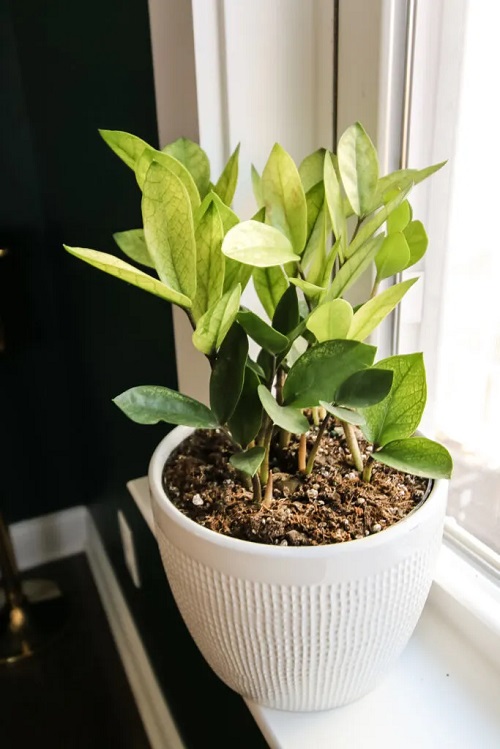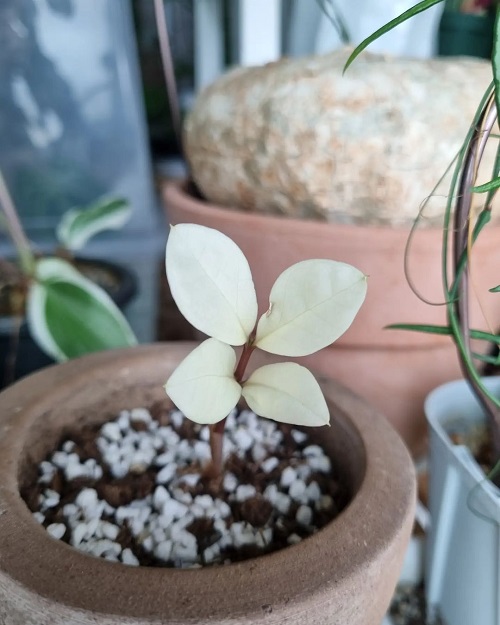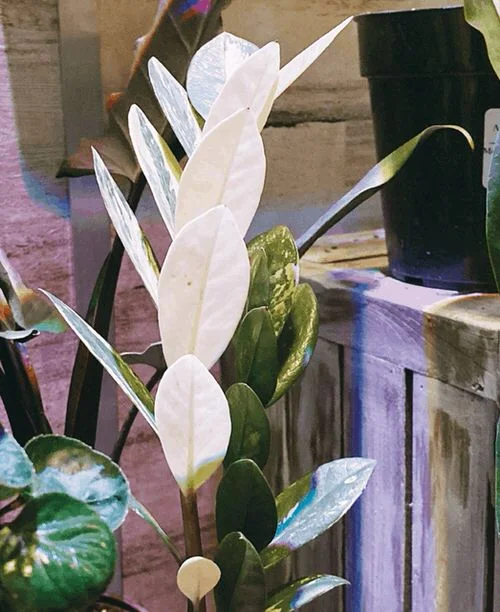If you’re looking for a plant that is low maintenance and has stunning variegated foliage, grow a White ZZ Plant!

White ZZ plants are not exactly “White” but have a tint of yellow and white on the leaves, which makes them appear very different from the regular green and rare black types.
Most Common ZZ plant Problems and their Solutions
Best White ZZ Varieties
1. Zamioculcas zamiifolia ‘Zamicro’: Zamicro comes with its petite size and delicate white variegation.
2. Zamioculcas zamiifolia ‘Whipped Cream’: This cultivar of ZZ attracts with its creamy white variegation that blankets each glossy leaf.
3. Zamioculcas zamiifolia ‘Aurea’: This plant’s golden-yellow or creamy variegation is vividly present across each glossy leaf.
4. Zamioculcas zamiifolia ‘Lucky White’: Lucky White has pure white variegation on leaves that symbolizes purity.
Ideal Pot Size
When selecting the ideal pot size for your plant, go for one about 8-12 inches. This will be good for 2-3 years, and after that, you can re-pot it into a one-size bigger container than the older one.
Propagating White ZZ Plant

White ZZ plant is a variety of Zamioculcas zamiifolia, which means you can propagate it similarly—from leaf-cutting, stem cutting, and division (which works the best). We have a detailed article on how to grow this plant using all these methods here.
Learn All about Propagating Elephant Ear Plant
Requirements Of Growing White ZZ Plant

Location
White ZZ plants thrive at a location with bright and indirect light that helps the white on the leaves stay that way! To ensure optimal growth, you must provide them with consistent, filtered sunlight throughout the day (4-5 hours, at least).
Avoid exposing the plant to direct sunlight for extended periods, particularly in warmer zones, as this can lead to leaf scorching. Also, do not keep it in a dimly lit space, as it will force the plant to revert back to green leaves.
Soil
Opt for a well-draining, aerated mix to prevent waterlogging and root rot. A blend of peat moss, perlite, and coarse sand provides optimal drainage while retaining sufficient moisture to support growth.
Avoid heavy or pure garden soil, which may hinder root development, leading to plant stress.
Water
Follow a straightforward guideline – Water the plant when the top inch of soil feels slightly dry. Remember that wilting leaves or drooping foliage may indicate underwatering, so be attentive to the plant’s hydration needs.
Temperature
To support healthy growth, maintain indoor temperatures between 55-85°F (12-27°C) for your White ZZ plant. Avoid exposing it to temperatures below 50°F (10°C) and above 90°F (32°C), and ensure it’s positioned away from cold drafts and air conditioning vents.
Taking Care of White ZZ Plant
Fertilizer
Don’t worry much about feeding the plant if you have used a good-quality potting mix with organic matter.
To boost the white coloration of the foliage, go for a balanced liquid fertilizer, diluted to one-fourth or half of its strength, once in 6-8 weeks. Do refer to the label for instructions.
Pests and Diseases
While generally hardy, White ZZ plants may occasionally attract unwanted pests such as aphids, whiteflies, and mealybugs. A simple solution is to use a jet of water or neem oil solution to eliminate them effectively.
Maintaining consistently damp soil can invite issues like leaf spot disease or botrytis. To prevent such problems, avoid overwatering your plant and ensure proper air circulation in the area where it’s kept.



